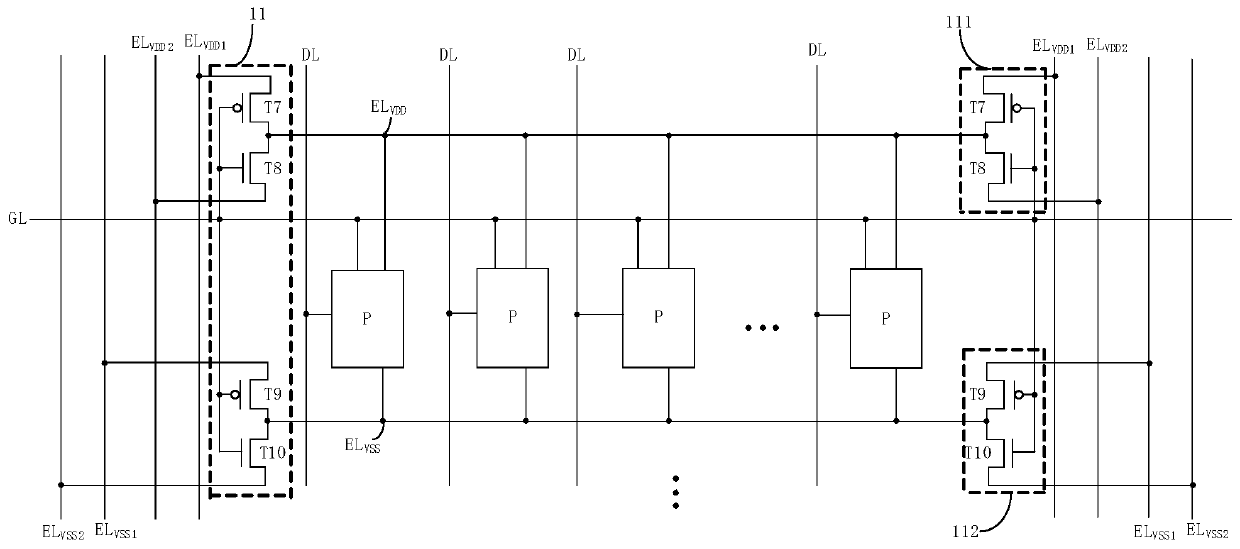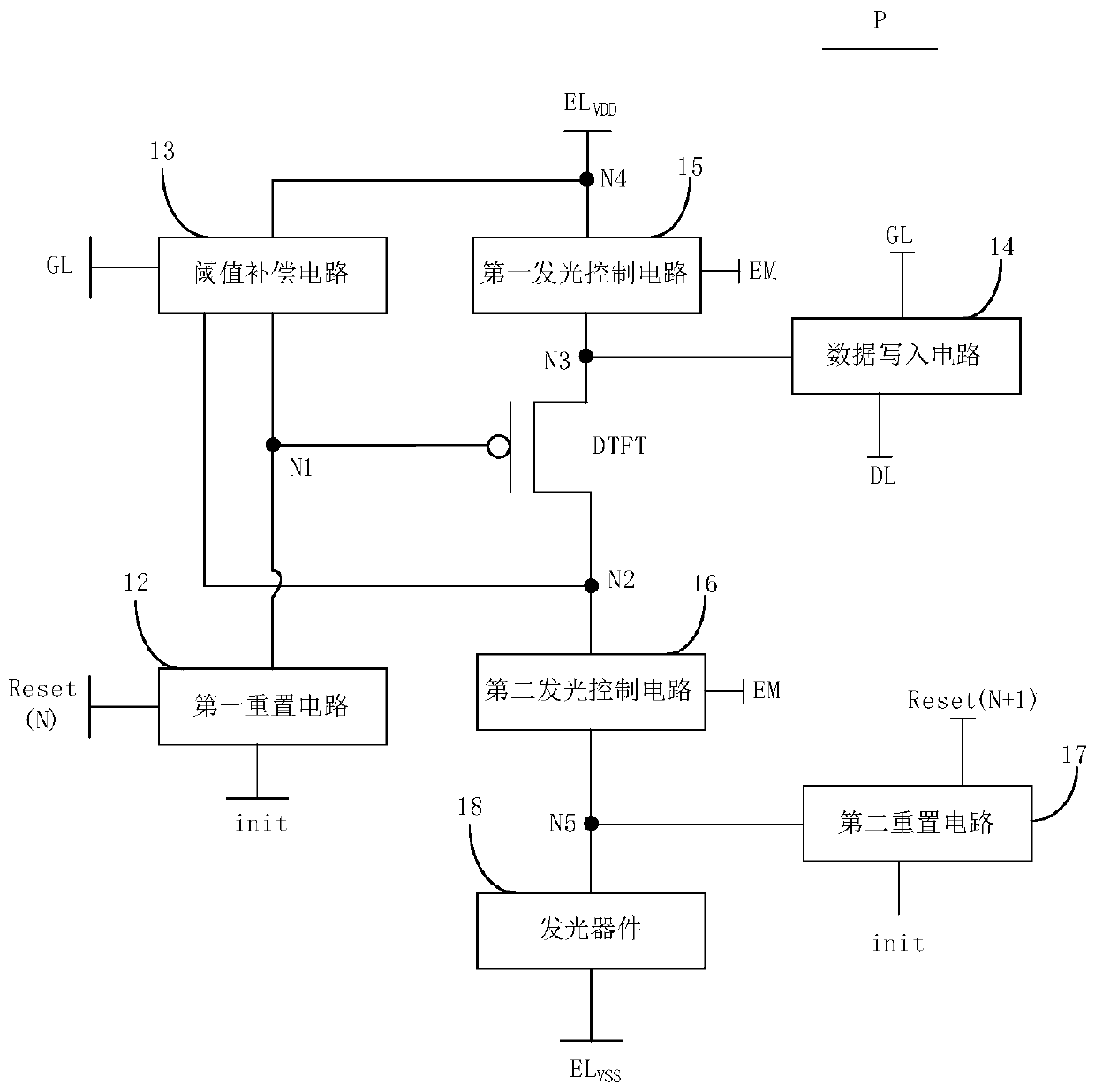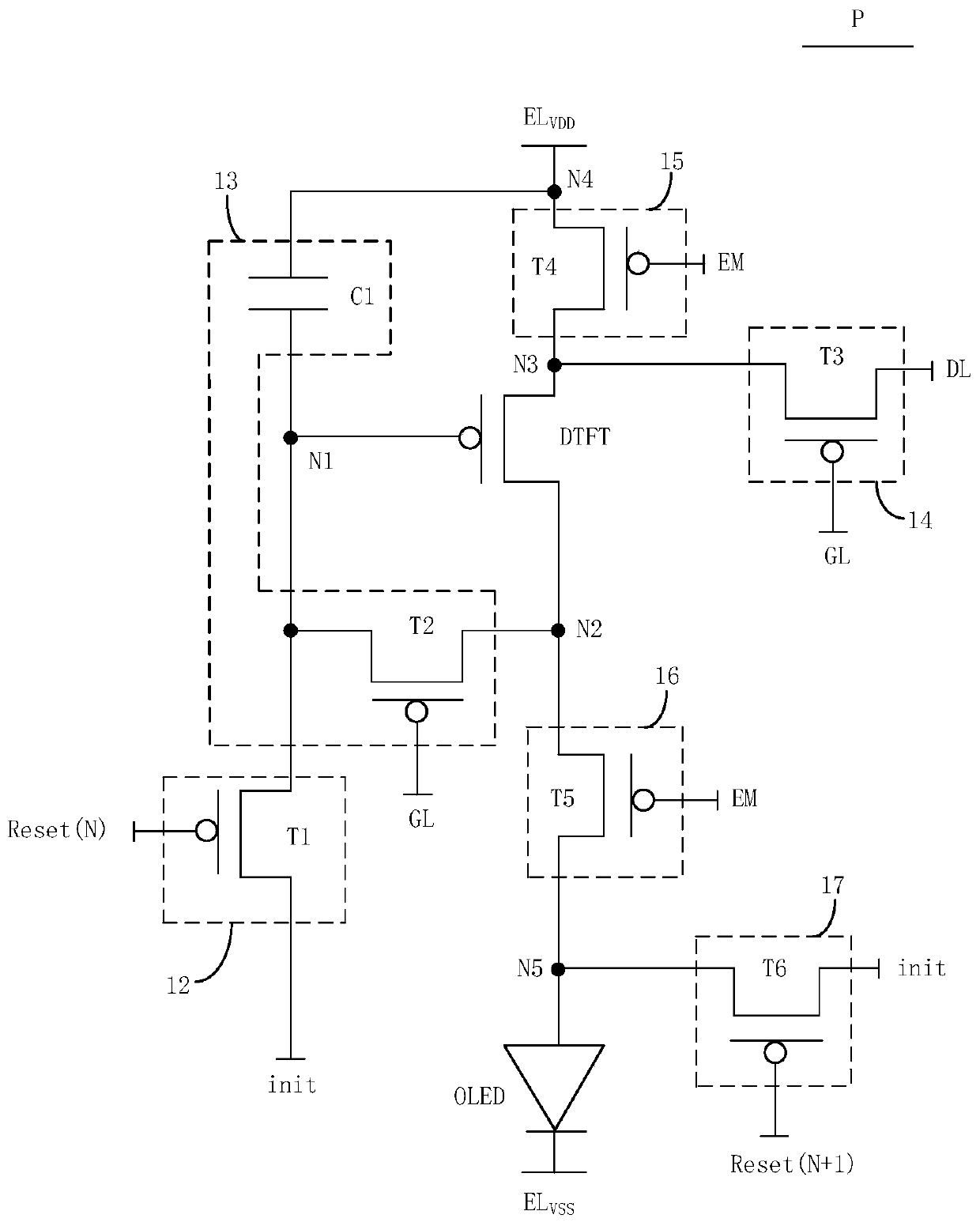Display panel, display device and pixel driving method
A display panel and pixel technology, applied in static indicators, instruments, etc., can solve problems such as affecting the screen display effect, increasing the power consumption of light-emitting diodes, and OLED current instability.
- Summary
- Abstract
- Description
- Claims
- Application Information
AI Technical Summary
Problems solved by technology
Method used
Image
Examples
Embodiment Construction
[0042] In order for those skilled in the art to better understand the technical solutions of the embodiments of the present disclosure, the technical solutions of the display panel, the display device, and the pixel driving method provided by the embodiments of the present disclosure will be clarified below in conjunction with the drawings of the embodiments of the present disclosure , fully describe.
[0043] Example embodiments will be described more fully hereinafter with reference to the accompanying drawings, but may be embodied in different forms and should not be construed as limited to the embodiments set forth herein. Rather, these embodiments are provided so that this disclosure will be thorough and complete, and will fully convey the scope of the disclosure to those skilled in the art.
[0044] The terminology used herein is for describing particular embodiments only and is not intended to limit the present disclosure. As used herein, the singular forms "a" and "th...
PUM
 Login to View More
Login to View More Abstract
Description
Claims
Application Information
 Login to View More
Login to View More - R&D
- Intellectual Property
- Life Sciences
- Materials
- Tech Scout
- Unparalleled Data Quality
- Higher Quality Content
- 60% Fewer Hallucinations
Browse by: Latest US Patents, China's latest patents, Technical Efficacy Thesaurus, Application Domain, Technology Topic, Popular Technical Reports.
© 2025 PatSnap. All rights reserved.Legal|Privacy policy|Modern Slavery Act Transparency Statement|Sitemap|About US| Contact US: help@patsnap.com



